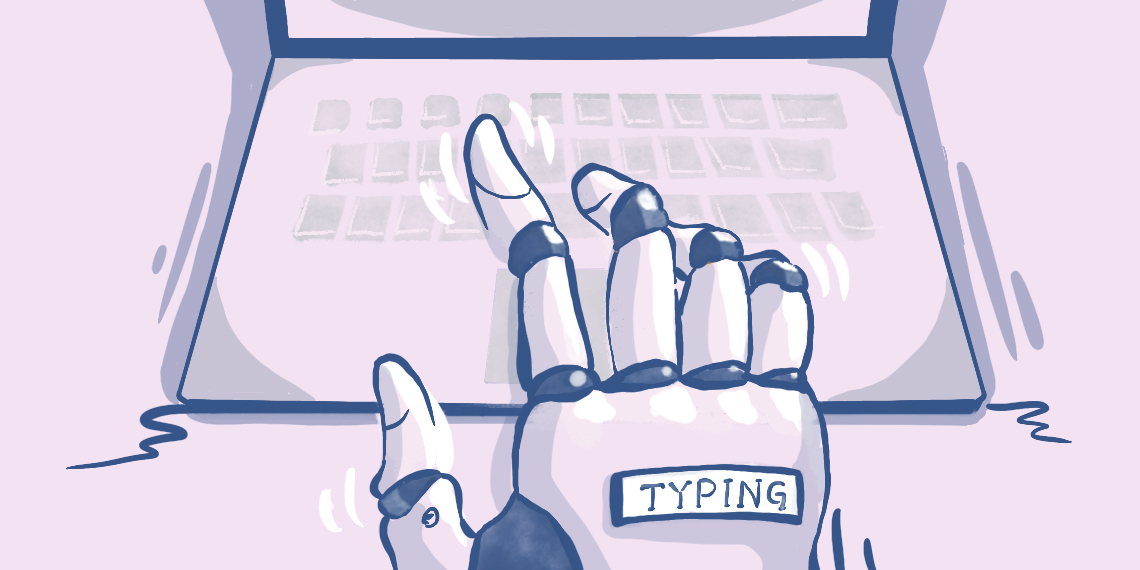WTF is app sprawl (and how does HR get organized)?

Picking what workplace apps to use, keeping them streamlined, training employees on how to use them, and knowing when to introduce a new one is no small responsibility.
Sifting the hundreds of thousands of tech products available to create the best tech stack that makes sense for your workplace and ensuring it’s future-proofed, is time-consuming. And with AI products in particular evolving so quickly – at times, overwhelming.
In the race to make workforces productive in remote settings in the last few years, companies hit the gas on what was already a growing issue: “app sprawl.”
In using tech to make teams more efficient, many organizations have opened the door to a flurry of new workplace apps – all touting their utility as productivity and efficiency enhancers. While that may be the case for them individually, the effect of them combined has created a somewhat Frankenstein tech stack issue for many companies.
And it’s starting to keep not only HR execs awake at night, but also IT and security chiefs.
App sprawl is only likely to rise as more and more apps enter the market, which is making chief information officers prioritize consolidation and reducing complexity in workplace tech stacks, according to Canva’s 2024 CIO report. A total 72% of CIOs are concerned about app sprawl and 64% say they don’t have enough staff to train employees on new technologies, the same report found.
Meanwhile, the average knowledge worker uses approximately 30 apps per day and will context-switch close to 3,000 in a single day, according to the Harvard Business Review.
We spoke to experts to better understand what exactly app sprawl is, how to avoid it, and what it takes to stay organized.
What is app sprawl?
It’s also known as “app overload” or “SaaS [software-as-as-service] sprawl” and is a byproduct of internal tunnel vision. “It’s the concept of over-acquiring tools or software which in turn actually reduces process efficiency or business operations within an organization,” said Madeline Grecek, senior manager of people enablement, at HR platform Remote.
App sprawl can quietly sneak up at a company when teams are solely focused on just what they need to get their jobs done. Pretty quickly this can become unwieldy and HR departments are left with a dispersed tech stack. And that’s a problem.
“Piling one piece of software onto another can become very difficult to manage and integrate,” said Grecek. “This often can unintentionally create an environment where more manual work is being created by having to piece together bits and parts of different systems.”
This, in turn, impacts the employee experience and can create those security risks that the CIOs in Canva’s report hinted at. Mrinal Mohit, founding engineer and manager at enterprise search engine and AI assistant Glean describes it as a “frustrating, death-by-a-thousand-cuts feeling of toggling across different apps all day.”
How does it slow employee productivity?
Employees spend, on average, at least two hours a day — or 25% of their workweek — just looking for the documents, information, or people they need to do their jobs, according to a Harris Poll survey. And employees are so frustrated with having to search across every company app or service for this information that nearly half would consider leaving a job if there wasn’t an efficient or easy way to access it, the same survey found.
“Besides impacting employee productivity, app sprawl leads to several other challenges: increased costs due to the sheer number of applications, data security risks if the applications fail to adhere to an organization’s permission rules, feature overlaps and employee confusion from navigating multiple interfaces,” said Mohit.
While it’s not necessarily new, it’s maturing and becoming a more pressing issue for organizations to solve.
“Apps sprawl absolutely is real and has been a growing issue for many organizations over the last two decades,” said Rob Ryan, head of thought leadership and business value at Workgrid Software, a workplace technology company and Liberty Mutual-owned organization. “The reason for this is the rise of SaaS applications, rapid development, and budgets which have moved from more IT centered procurement to line of business utility rich applications.”
There is a fine line between having a suite of workplace apps that allow employees to do their job the best way possible and to completely inundating a workforce, where people aren’t trained on all of the apps or if information is too dispersed.
“While having apps that can perform tasks, communicate cross-functionally, and keep track of data helps to streamline processes, too many apps can actually hinder your team’s productivity for a few reasons,” said Andy Boyd, chief product officer at global workplace software provider Appfire. “In some situations, there is almost too much information available to employees and they end up spending more time searching for information across multiple platforms versus having one or two sources of truth that they can trust will hold the most updated information for their job function.”
He says context switching, the time spent switching back and forth between different apps and platforms, also comes into play here when there are too many apps to work between.
Is app sprawl avoidable?
That’s a valid question given there are so many different pieces of workplace technology to try out today. While it’s important businesses invest in new tech that helps employees achieve their goals, it’s easy to quickly hit app sprawl.
Mohit believes that app sprawl is unavoidable, but it can be decreased with intentionality – and that’s going to involve a big lift on the part of HR.
“HR teams can start by taking a less reactive approach to how they assess their needs and determine what needs to be acquired and what the system will ultimately solve for or deliver,” said Grecek. “This requires continuously pulsing employees on their experience, leveraging data to track core metrics and clearly defining required system capabilities.”
Grecek says that often teams think about their needs in the moment rather than the future, leaving them to overlook the scalability or viability of the solution they’re implementing.
“When teams take a more intentional approach to effectively assessing their needs and system offerings, they are more likely to acquire less tools, at possibly a lower cost that actually better meets the current and future needs more effectively,” said Grecek.
At the same time, HR teams are navigating their own tech stacks.
“Today, HR teams are tasked with everything from employee communication, compensation management, performance reviews and talent management,” said Boyd. “Finding the right apps will help streamline processes but there are a number of considerations HR teams must take into account when selecting which apps they use.”
Everything they can help other teams with for their tech stacks applies to them as well. That includes integration with existing systems, data security and privacy, scalability, and user experience – arguably the most important.
“In some instances, apps are used by both HR teams and employees,” said Boyd. “Because of this, the app has to be user-friendly or else engagement levels will drop.”
How best to streamline and manage app sprawl?
While HR should continuously ask for feedback around employee experience using workplace technology, they can also be at the core of a company’s organizational tech stack. That might require looking at what existing tools are being used and at what capacity, understanding how a new tool will interact with the rest of a stack, and if the new tool will add significant value in terms of team capacity.
A good starting point is having stakeholder discussions for a “needs” assessment, according to experts spoken to for this article. A full audit could go a long way to understanding the current system infrastructure and spotting any gaps.
“By monitoring your network for unknown apps, surveying employees, and partnering with finance to identify expensed app purchases, businesses can better understand which tools provide the highest value,” said Jody Shapiro, founder of spend management platform Productiv.
When adding a new workplace app, Grecek suggests asking questions like: What specific need or problem will this solve for the business? How does the new tool complement or integrate with the existing tech stack? What are the expected benefits and how will the value be measured against the required investment? Shapiro says that when leadership is aligned around a source of truth for SaaS insights, it’s easier to streamline what to use.
“With a single source of truth for SaaS insights, IT, procurement, finance, security, and line of business leaders can confidently align on SaaS data to make better decisions together,” said Shapiro. “And when IT and procurement teams deny new app requests or recommend license cuts to business leaders, they have the trusted data they need to back up their decision.”
He says that when everyone can clearly understand why decisions are made in regard to the company’s SaaS portfolio, it’s easier to put processes in place to control app sprawl. That will lead to business leaders and employees being more likely to approach IT and procurement for their app needs instead of purchasing their own.
Another solid rule of thumb, according to Boyd, is to “select apps that can be applied across a range of different business functions, versus implementing a single application for one singular function.”
“Minimizing the number of applications your department relies on regularly to communicate, collaborate on projects, and share information ensures that your data is both secure and more directly accessible to those who need it to perform their jobs effectively,” said Boyd.


